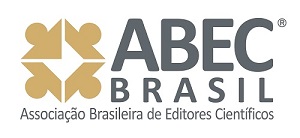SCENES OF JOINT ATTENTION: POINTING GESTURE AND CHILDREN"™S VOCAL PRODUCTION
Keywords:
Pointing, Joint Attention, InteractionAbstract
Developing from interactional schemes, children incorporate, during the course of language acquisition, segments from adults. At the beginning of the interactions, the child is totally dependent on adult/mother speech. Over time s/he acquires the ability to represent the intentions, attention, and knowledge, of the people they interact with, becoming, thus, independent of the statement the other and starts, by him/herself to combine words and fragments in order to establish communication with the interlocutor. However, these words and fragments do not stand alone, they are accompanied by gestures before emerging even before children start using holophrases, as being the primary form of communication between the infant and his/her caregiver/mother. In view of these facts, our objective is to show the use of the pointing gesture and its relationship with children's vocal production, in scenes of joint attention. Therefore, we analyzed two mother-baby dyads with 18-month-old children, who are part of the corpus of the Speech and Writing Laboratory of the Federal University of Paraíba (LAFE/UFPB), to understand the relationship between the pointing typologies described by Cavalcante (1994) and the scenes of joint attention proposed by Tomasello (2003). As a result, we can state that after the child understands that s/he can, s/he starts to combine gesture and speech to establish the interaction, characterizing an evolution in his cognitive notions.
Downloads
References
CAVALCANTE, Marianne Carvalho Bezerra. O manhês e o impossível da língua. In: LAZNIK, Marie-Christine; COHEN, David (Orgs.). O bebê e seus intérpretes: clínica e pesquisa. São Paulo: Instituto Langage, 2011. p. 243-251.
CAVALCANTE, Marianne Carvalho Bezerra. Rotinas interativas mãe-bebê: constituindo gêneros do discurso. Revista Investigações. N. º especial em homenagem a Luiz Antônio Marcuschi. Recife: Editora da UFPE, v. 21, n. º 2, 2008. Disponível em: <https://periodicos.ufpe.br/revistas/INV/article/view/1449/1126> Acesso em: 25 de Janeiro de 2014.
ELAN, versão 4.9.4. [s.l.]. Max Planck Institute for Psycholinguistics, The Language Archive, Nijmegen, The Netherlands, 2013. Disponível em: <https://archive.mpi.nl/tla/elan/download>. Acesso em: 15 mai. 2013.
MCNEILL, David. So you think gestures are nonverbal?. Psychological Review. Vol 92(3), 1985. Disponível em: < https://www.researchgate.net/publication/229068226_So_You_Think_Gestures_are_Nonverbal>. Acesso em: 13 Nov. 2014.
SCARPA, Ester Maria. O lugar da holófrase nos estudos de aquisição de linguagem. In: Cadernos de Estudos Linguísticos. Campinas, 51(2): 187-200, 2009. Disponível em: < https://periodicos.sbu.unicamp.br/ojs/index.php/cel/article/view/8637211>. Acesso em: 18 Jul. 2013.
TOMASELLO, Michael. Origens Culturais da Aquisição do Conhecimento Humano. Tradução de Cláudia Berliner. 1. Ed. Martins Fontes: São Paulo, 2003. 342p. ISBN: 85-336-1731-3
____________.Origins of human communication. Cambridge, MA: MIT. PRESS, 2ª Ed. 2010. ISBN: 978-0-262-20177-3.
WITTENBURG, p., BRUGMAN, h., RUSSEL, a., KLASSMANN, a., SLOETJES, h. Elan: a professional framework for multimodality research. In: Proceedings of LREC 2006, fifth international conference on language resources and evaluation, 2006.
Downloads
Published
How to Cite
Issue
Section
License
Copyright (c) 2019 Thalita Maria Lucindo Aureliano, Kátia Araujo de Lima, Marianne Carvalho Bezerra Cavalcante

This work is licensed under a Creative Commons Attribution-NonCommercial-ShareAlike 4.0 International License.






